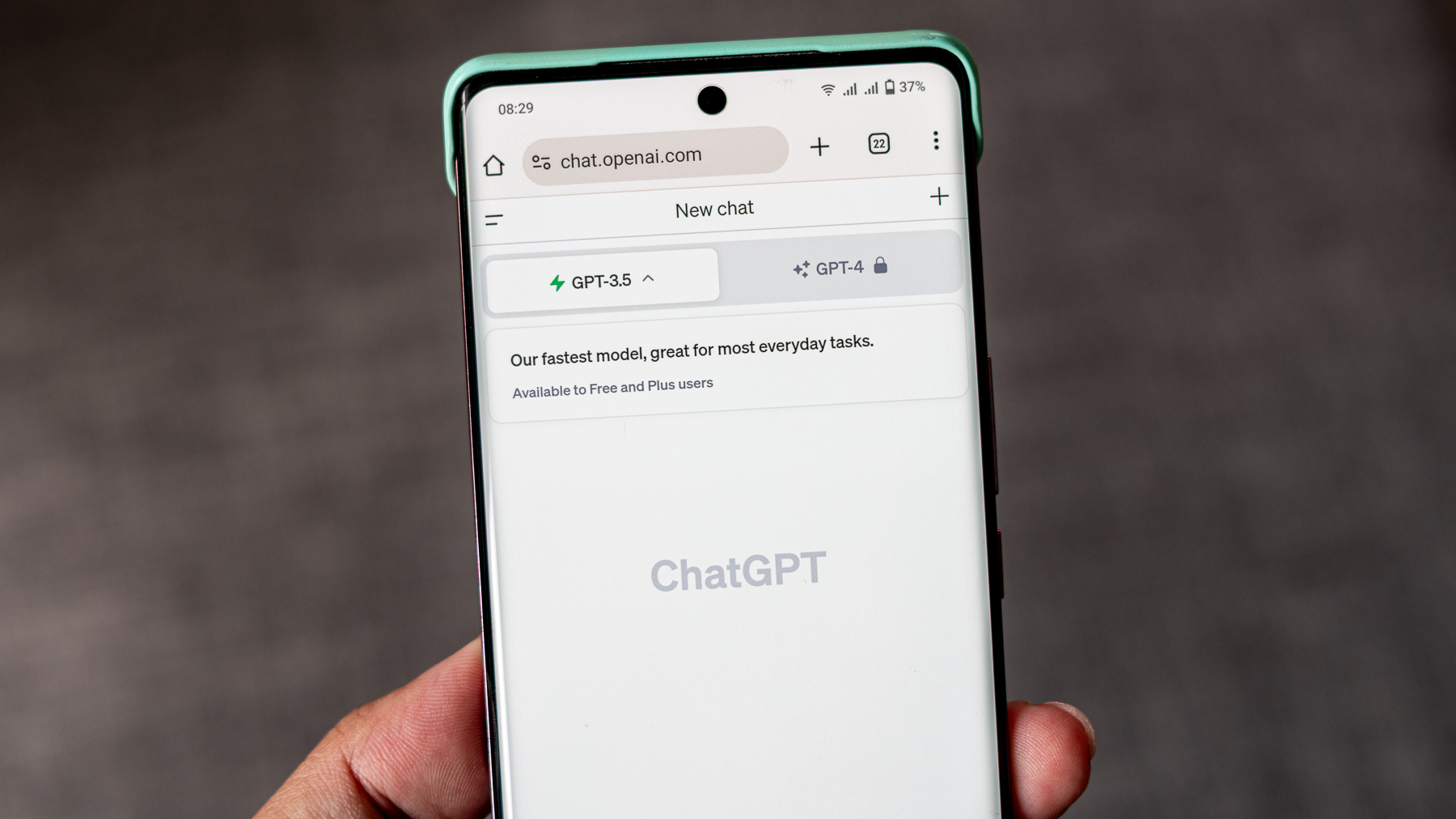Google Pixel Buds Pro 2 vs. Samsung Galaxy Buds 3 Pro: Which one should YOU buy?
Both are great additions to their companion phones and watches, but which stands on its own?
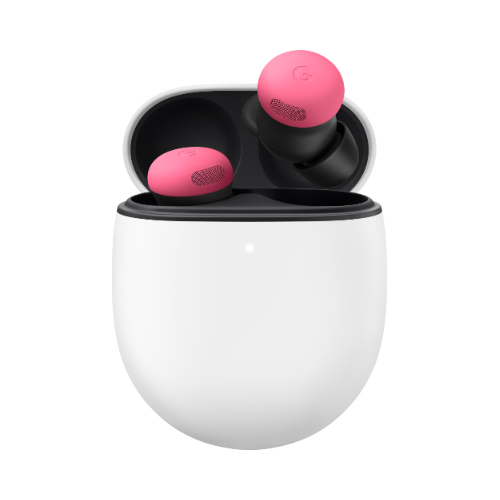
Small buds, big sound!
There's a lot to like about the Google Pixel Buds Pro 2. They sound great-the bass response is delightful, the ANC is solid, call quality is great, and Gemini is like something out of a comic book.
For
- Google Gemini integration is very cool!
- Highs and sub-bass extension are great
- Volume level/power output is excellent
- Robust app with EQ options
- Supremely comfortable
- Beautiful colors
Against
- Gemini growing pains
- Pixel Buds app “Find device” ringtone volume
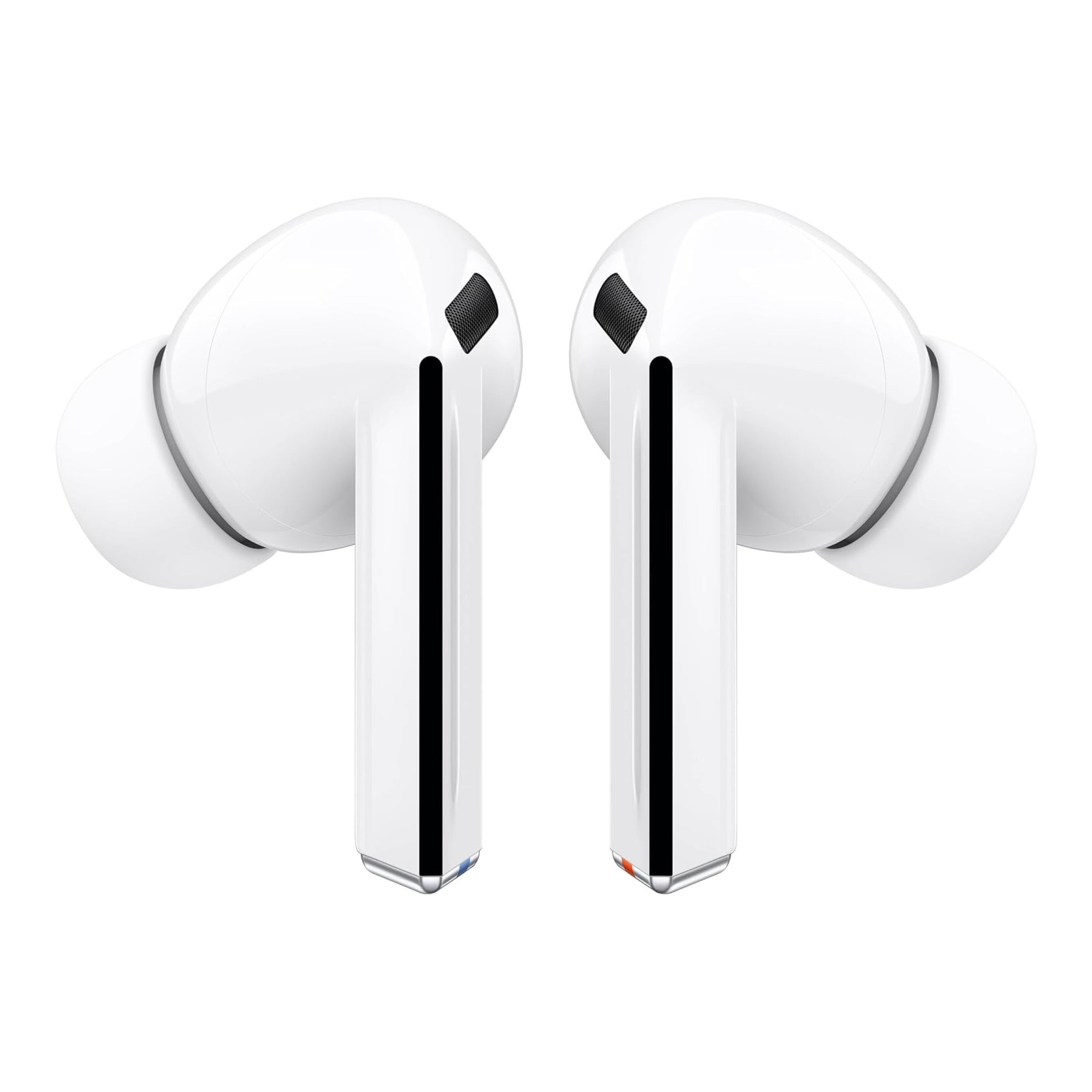
Exciting earbuds!
They look cool. They sound great! They have an awesome feature-set if you're a Samsung phone and watch owner. And they even sound great with the Bluetooth LE codec on phones that support it.
For
- Hands-free, offline voice controls
- Clarity and detail with the SSC codec
- Ecosystem integration
- Earbud ergonomics
- Robust app with EQ options
Against
- Needs the Wear app for best results
- UHQ version of SSC codec available on limited devices
The year 2024 has been one of the most interesting years in recent memory regarding Bluetooth earbuds. Broader support for Hi-Res Wireless Audio codecs has leveled up many listening experiences. Artificial intelligence has been onboard for many devices over the last couple of years, but only in the background, strengthening ANC or call quality. But this year, AI has taken the main stage in controlling functions without an internet connection and is trying to replace Google Assistant.
Both Google and Samsung have implemented some noteworthy changes in their earbud designs, with Samsung’s being the most radical compared to its previous generations of products. AI has been marketed heavily with both, but there are marked differences between the implementation of AI with the Google Pixel Buds Pro 2 and Samsung Galaxy Buds 3 Pro.
Which pair of earbuds sound better? Which pair is “smarter?” Today, we’re helping you decide which Bluetooth earbuds are best for you: Google’s Pixel Buds Pro 2 or Samsung’s Galaxy Buds 3 Pro.
Google Pixel Buds Pro 2 vs. Galaxy Buds 3 Pro: Major Design Changes
Why you can trust Android Central

The cases of each product feel about the same size when you hold them next to each other despite the numbers. The Pixel Buds Pro 2 measure 63.3mm x 49.9mm x 25mm, while the Galaxy Buds 3 Pro measure 58.9mm x 48.7mm x 24.4mm.
The Galaxy Buds 3 Pro case is a bit more blocky. Because of the way it opens and its shape, it resembles a tiny box of crayons, while the Pixel Buds Pro 2 is more of an oval, kind of a “flat” egg aesthetic. Despite the difference in shape, both are easily pocketable.
Aesthetically, I prefer the look of the silver Galaxy Buds 3 Pro case with its tinted, transparent lid and silver case. It’s also available in white with a transparent lid, and the Pixel Buds Pro 2 case is available with white cases only. I’m no fan of either white case because of the potential extra maintenance involved in keeping them clean.
Overall, I prefer the design and color options of the Google Pixel Buds Pro 2 earbuds. The addition of twist-to-fit fins really feels like it locks the earbuds into my ears, so they’re comfortable and stay in place for the most part during workouts. The buds themselves are so tiny that they don’t stick out much. Their bright colors will stand out more than they’ll stand out from your ears. They’re quite lightweight in the ear and haven’t felt fatiguing at any time.
At the same time, the new blade design of the Galaxy Buds 3 Pro with the Tron-like lights on the stems is quite compelling. I like what they’ve done with those design touches on what could’ve been plain “gray” stem-style earbuds. Stem-style earbuds are enemies to my ear shape and rarely fit well, but these do. They aren’t quite as locked in during exercise as the Pixel Buds, but they don’t fall out like past stem-style earbuds had when I tried to casually wear them outside of the gym, often falling out even when I’m just talking or chewing.
Google Pixel Buds Pro 2 vs. Galaxy Buds 3 Pro: Specs Compared
| Category | Pixel Buds Pro 2 | Galaxy Buds 3 Pro |
|---|---|---|
| Connectivity | Bluetooth 5.4; LE Audio, Super Wideband | Bluetooth 5.4, Auto Switch |
| Speakers | Custom-designed 11 mm dynamic speaker driver | 10.5mm Dynamic + 6.1mm Planar |
| Codec support | SBC, AAC, Opus | Samsung Seamless Codec (SSC), SSC UHQ (24bit/96kHz), AAC, SBC |
| Battery life | Up to 8hrs w/ANC on, 48 hours with case | Up to 6 hours (ANC on) / 26 hours with case |
| Charging | USB-C, Qi wireless | USB-C, Qi wireless |
| App support | Pixel Buds (Android only) | Samsung Wearable (Android only) |
| Durability | Earbuds: IP54 Case: IPX4 | Earbuds: IP57Case: n/a |
Although both sets of earbuds support Bluetooth 5.4 and, theoretically, Auracast, the Pixel Buds Pro 2 don’t support Hi-Res Wireless codecs like LDAC, LHDC, or aptX Adaptive. The Galaxy Buds 3 Pro don’t either, but they do support Samsung’s hi-res SSC codec, with further support for the UHQ version of that codec if you have the right Samsung phone paired with them.
Talking about hi-res, both devices support Super Wideband calling. Both devices sounded quite pleasing to callers and had robust voice reproduction when listening back to recordings captured on our Pixel 9’s built-in Recorder app.
Concerning durability, the Pixel Buds Pro 2 wash the Galaxy Buds 3 Pro — pun intended. For the first time, Samsung added dust resistance to its buds but left its case high and dry with no water resistance rating. The Pixel Buds, on the other hand, imbue their case with IPX4 water resistance.
Samsung doesn’t go into detail about the processor inside its buds, but Google leaned into the fact that its buds have its in-house processor, the Tensor A1. Despite that, both brands heavily market the built-in AI-enhanced calling quality, active noise cancellation, and sound quality. In the next section, we’ll dive into how they compare in the real world.
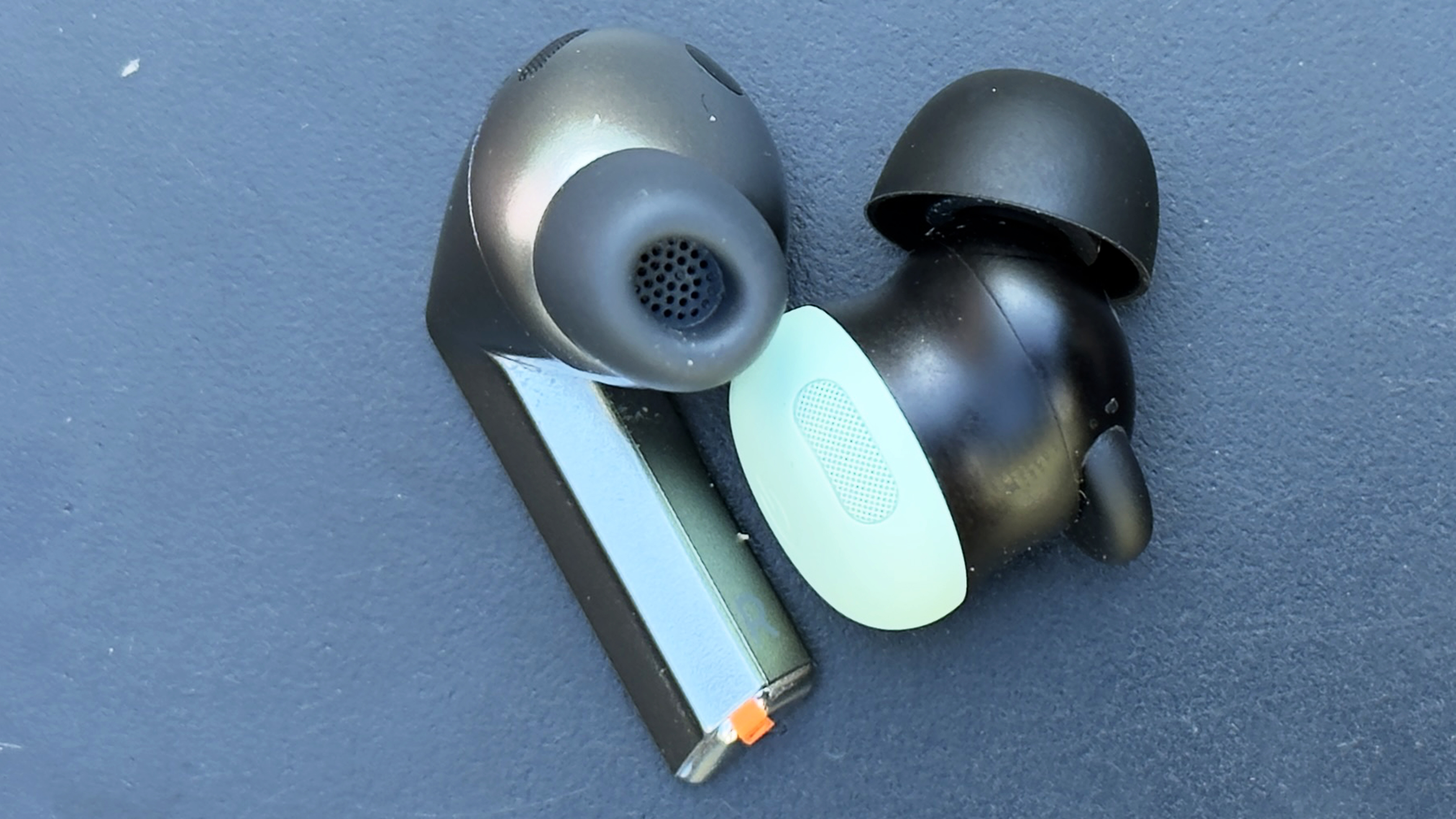
It may seem like a small detail, but regarding long-term sound quality and cleanliness, the Galaxy Buds 3 Pros have ear tips with a built-in perforated protective screen near their base to mitigate the ear wax accumulation that will happen during workouts and everyday use. It’s much easier to clean than the mesh screens protecting the internals below the posts. Again, it isn’t a major thing, but it’s a nice touch and shows that they’re really paying attention to detail when it comes to an in-ear product.
One of the areas where the buds are well differentiated is in their speaker/driver design, with the Pixel Buds Pro 2 using a custom-designed 11mm dynamic speaker driver and the Galaxy Buds 3 Pro using a more advanced approach. The Buds 3 Pro gives you a 10.5mm dynamic driver and a 6.1mm Planar speaker. How does that affect the listening experience between the two? Let’s talk about that below.
Google Pixel Buds Pro 2 vs Samsung Galaxy Buds 3 Pro: Does "hi-res" sound matter?
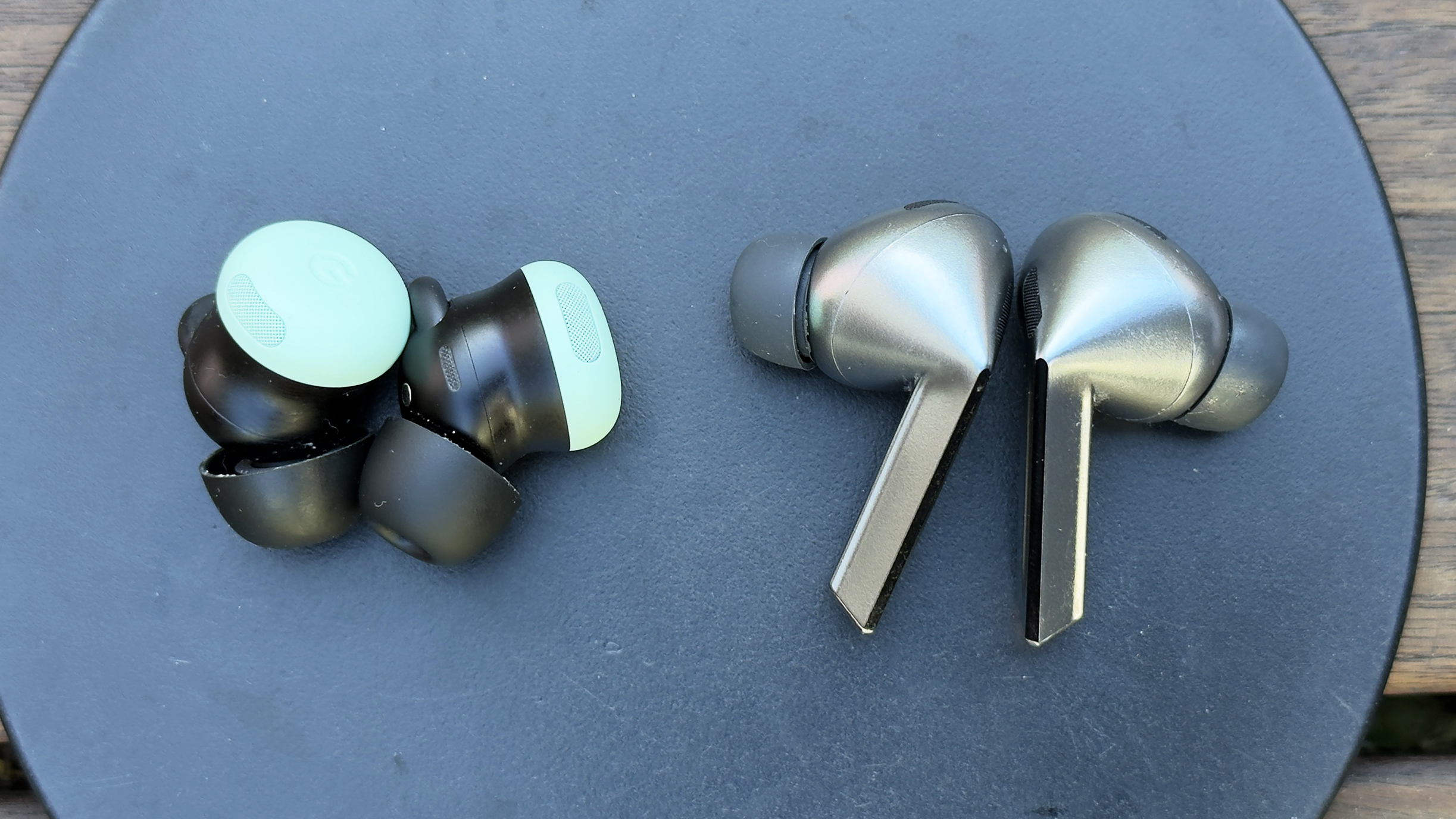
I compared the sound quality of both earbuds by sampling music from a few different genres and playing songs noted for particular characteristics. Initially, I listened to more acoustic-oriented music with both of their EQs set to Balanced. I then listened to EDM with Balanced EQs and a hyped bass response curve.
The Galaxy Bud 3 Pro sounded better overall. They have a larger soundstage, with more dynamic audio thanks to the SSC codec and its ability to stream a fuller data pipeline at 24bit/48kHz. In comparison, the more data-constricted AAC codec streaming 16bit/44kHz from Google’s offering surprisingly held its own, coming close enough to the quality of the Galaxy Buds. Both earbuds have highly satisfying clarity and reproduce beautifully layered stereo images when used in their ideal technological configurations. Again, for the Galaxy Buds, that meant being connected to a Galaxy S22 Ultra (UHQ is not supported here), while the Pixel Buds were connected to a Pixel 9, playing music through YouTube Music.
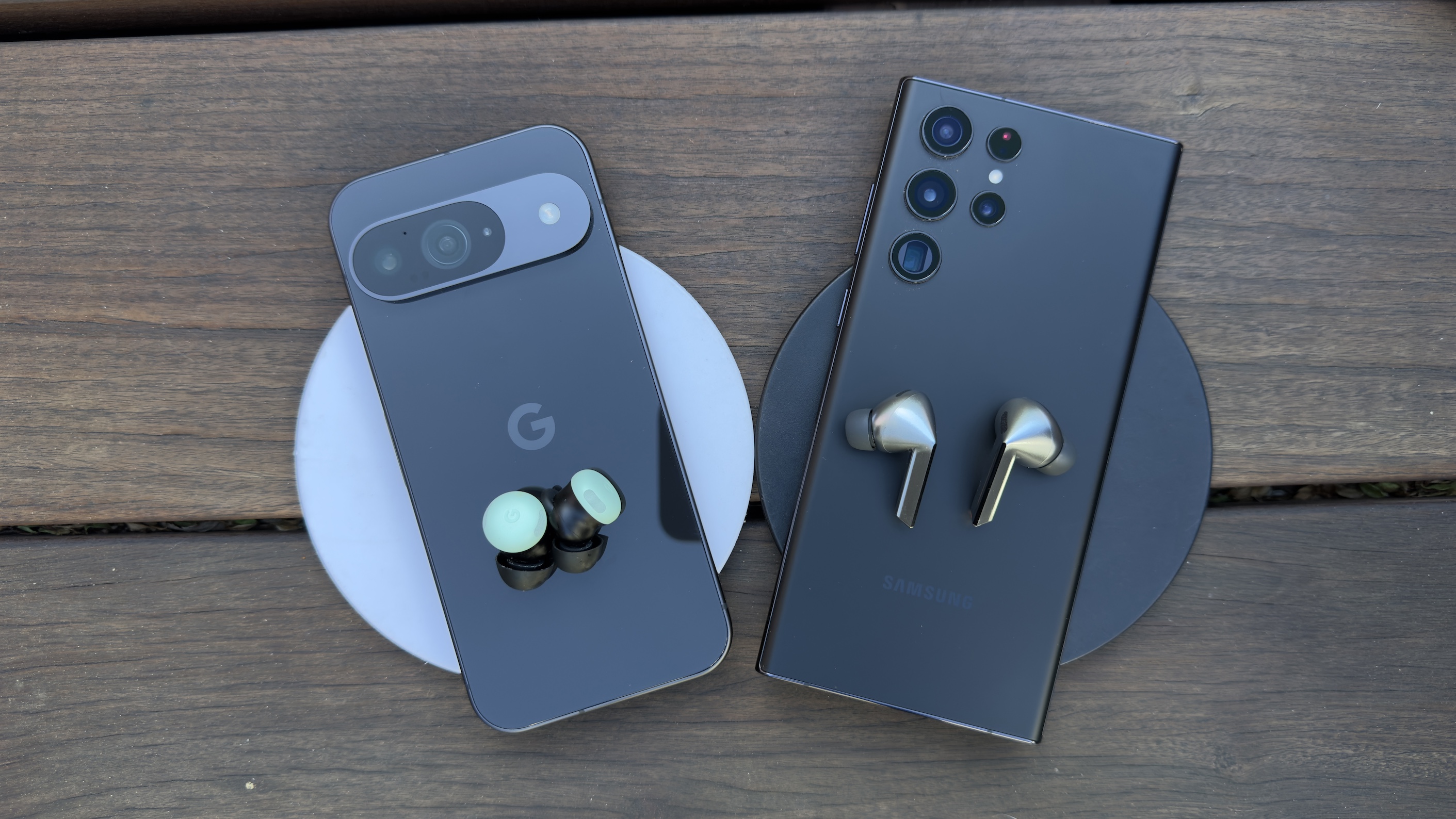
In fact, in my testing, I found that the Pixel Buds Pro 2 produced richer sub-bass. That may result from the single dynamic driver, but the low frequencies produced by the Pixel Buds Pro 2 had more rumble and weight to them. This is likely because of the Planar magnetic driver in the Galaxy Buds, known for embuing audio with beautiful clarity and tight, controlled frequency response but is a bit lighter in the bass area. The separate dynamic driver should compensate for it, but, again, subjectively, I give the “W” in bass response to the Pixel Buds.
With how they sound out of the way, let’s talk about how you will sound when you make calls or have to hop on a Zoom or Google Meet call. Hands down, I will give the “W” to the Pixel Buds Pro 2. Call clarity and background noise cancellation are audibly different as I recorded audio of a conversation in the middle of a busy metropolitan area with traffic whizzing by. The only con to the Pixel Buds Pro 2 was that some digital artifacts come with AI-enhanced background noise cancellation. Nothing distracting, but it's there. Overall, my audio from the mics was clearer and more noise-free with the Pixel Buds Pro 2.
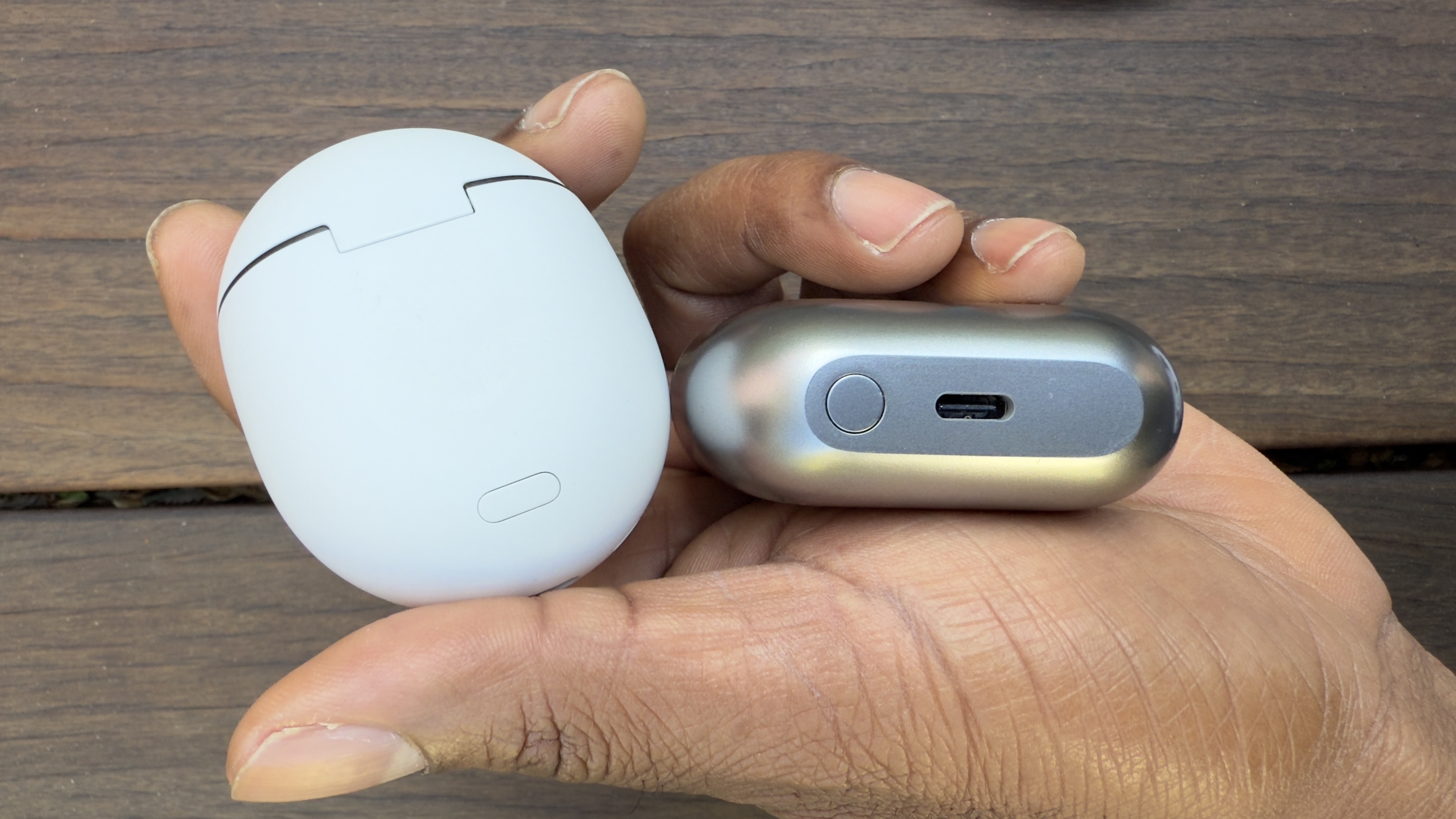
Rounding out how things sound, the Pixel Buds Pro 2 case comes with a speaker so that you can ring it when lost, in addition to the earbuds themselves being able to ring. You can ring the Galaxy Buds 3 Pro earbuds, but the case doesn’t have a speaker for ringing separately. You’re less likely to hear the Galaxy Buds if they’re in between couch cushions than you are to hear the Pixel Buds Pro 2 due to the volume and tone of the sound each emits.
Google Pixel Buds Pro 2 vs Samsung Galaxy Buds 3 Pro: The AI elephant in the room
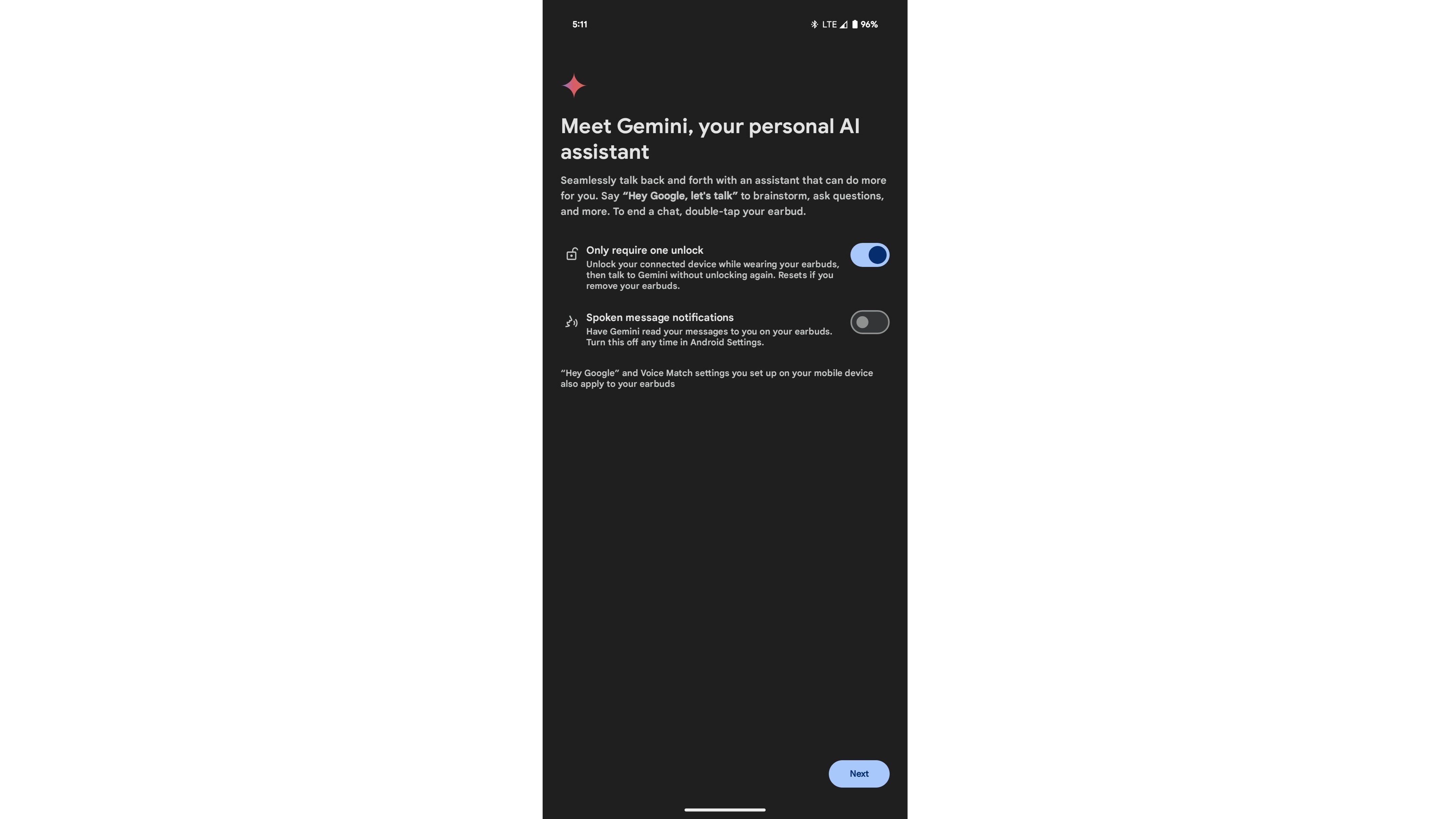
When mated to their ecosystem families of products, the Pixel Buds Pro 2 and Galaxy Buds 3 Pro have fairly robust feature sets and apps. If you’re in the Pixel ecosystem, the Pixel Buds app exists, but on Pixel phones, it’s basically just a link that takes you to the phone’s Bluetooth settings for the Pixel Buds Pro 2. You’d access the same settings by going into the phone’s settings, then Connected Devices, then tap the settings cog icon to the right of the Pixel Buds Pro 2. A third way to access these settings would be to long press on the Bluetooth quick settings shortcut in the Notification pull-down.
Both devices’ settings give you all the usual controls, such as customizing touch playback and phone calling controls, Find device, and firmware updates. Since both earbuds support Spatial Audio, you’ll also get that in your menu when connected to a compatible phone.
There are a few places where they diverge, though. Since the Pixel Buds case has a built-in speaker, you can turn that on or off. The Pixel Buds also have an intuitive and informative Hearing Wellness menu baked right into the settings, so you don’t need to go to a health app to get that data. With it, you can see your volume levels, hearing health trends, and how your hearing health is affected in real-time.
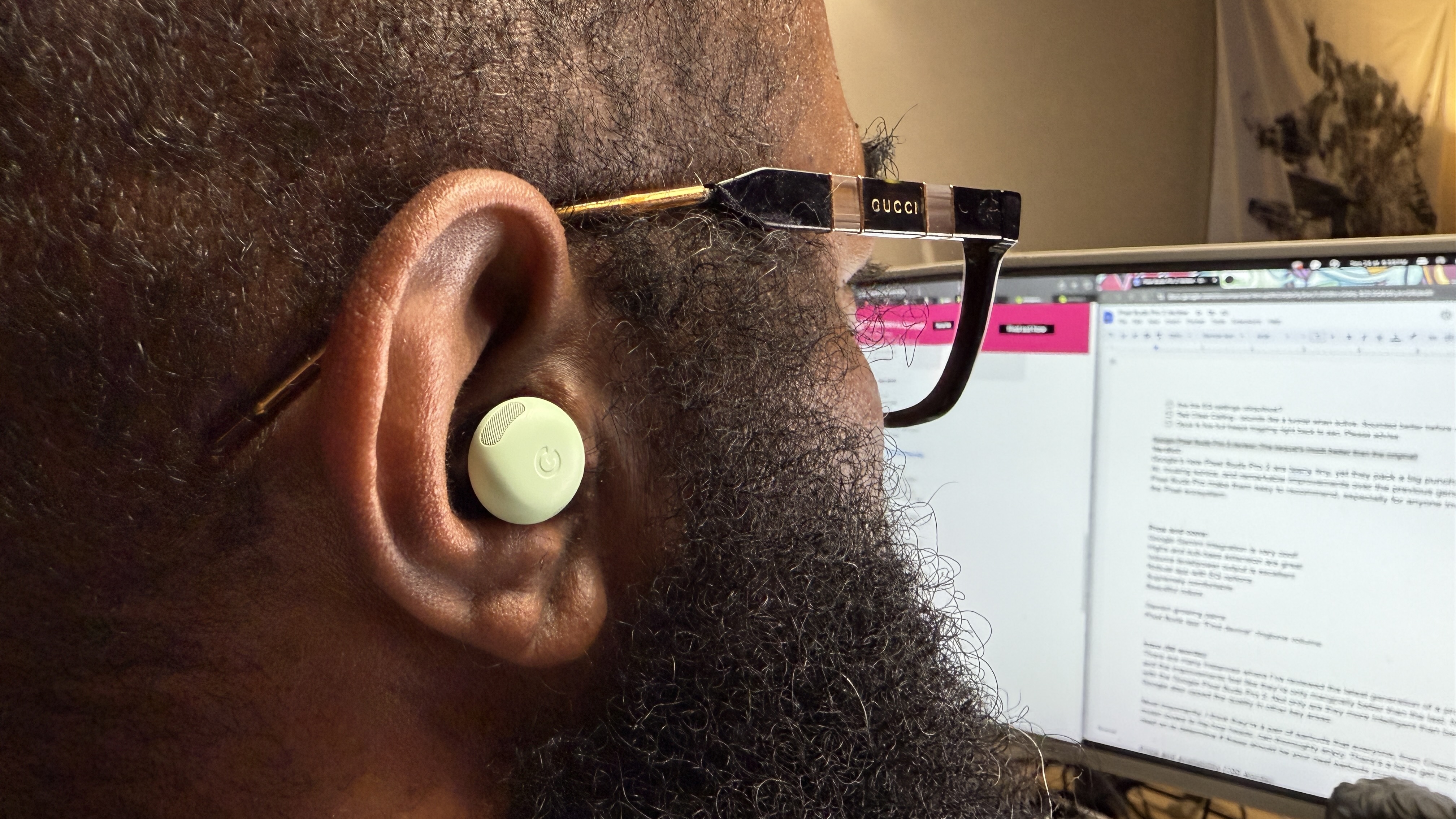
How about tailoring what you’re hearing? You’re lucky enough to get EQ with some decent features, but the Samsung Wearable app takes it further than Google. With the Pixel Buds, you will get 5-band EQ with access to six presets and the ability to create one custom setting. The Samsung Wearable app brings 9-band EQ to the table, with six presets and one custom. It makes more sense that Samsung’s offering is more expansive with its support for the SSC codec, which has more dynamic range than Google’s AAC support. Note that neither option allows you to save your custom EQ configuration. That custom isn’t persistent, so any changes you make will be what you’re using until you change it again.
One of the significant elements of the Galaxy Buds 3 Pro’s EQ implementation is the ability to change EQ settings based on the genre of music you are listening to. For me, that means boosting the low for my Hip-Hop, EDM, Dubstep, and Big Band Jazz tracks. Google’s Pixel Buds app doesn’t offer this ability.
Taking sound tailoring even further, both apps have settings for Spatial Audio. However, Samsung’s iteration utilizes Sony’s 360 Reality Audio variant, which doesn’t quite have the broad support to take advantage of it, in terms of music streaming services. But that isn’t all bad. If you’re in the Pixel phone ecosystem, it’s important to note that Pixel phones only support Google’s Spatial Audio implementation, not Dolby Atmos. Samsung phones’ support of 360 Reality Audio does include support for Dolby Atmos.
Both earbuds have massive AI-enhanced features, but for the latest features and some device exclusives like Gemini Nano with multimodality, Pixel Buds Pro 2 mated to Pixel phones are the winners. Using Gemini Live on the Pixel Buds is fantastic and a great look into the future of what the digital assistant will look like. It’s important to note that these large language model generative AI assistants are in their infancy, so the technology needs to mature more to be as relatively seamless as Google Assistant.
Some folks could argue that for today, Samsung’s Galaxy Buds 3 Pro’s AI implementation is more functional. It features the ability to use AI offline to control earbud functionality. I’ve enjoyed the offline ability to control music playback and volume and answer or decline phone calls via voice outdoors or in the gym. I hate taking my phone on runs and prefer using an LTE-connected smartwatch to play music locally. I don’t stream from a watch because it does kill battery life quickly when you’re out for a run or hike, and you’re tracking your workout, running standalone GPS, and using your LTE connection to stream music to the watch, then stream that to a pair of Bluetooth connected earbuds.
Regarding other premium and AI-driven features like in-ear detection or conversation detection, both sets of earbuds are close to parity.
Google Pixel Buds Pro 2 vs Samsung Galaxy Buds 3 Pro: Which one should YOU buy?
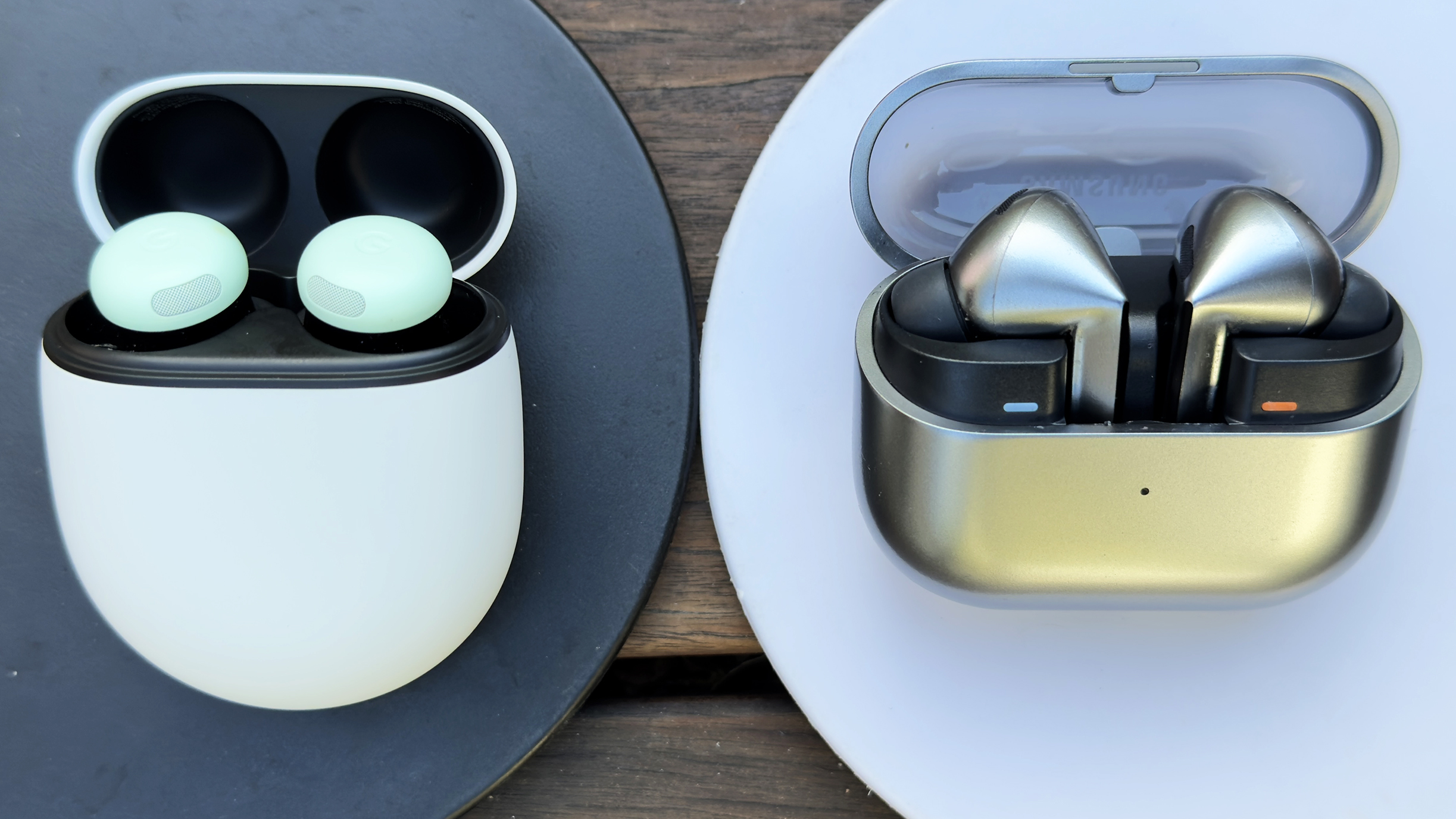
In their respective ecosystems, I advise using earbuds that match your phone and smartwatch. You’ll get the most options and the best connectivity.
Outside of that, the contest becomes a different tale of the tape. With no compatible Samsung smartphone connected, the Galaxy Buds 3 Pro lose their edge on dynamic range over the Pixel Buds Pro 2, supporting only AAC. At that point, losing that range and other Samsung-specific features, the Pixel Buds Pro 2 is the winner here despite Spatial Audio with head tracking being available only on Pixel devices. Their fit should work for a broader range of people and should be locked in more so that you’re not readjusting them every few minutes during more dynamic workouts.
Pixel Buds also have the edge over Samsung in battery life. With ANC on, you’ll get around eight hours of playback with Google but six from Samsung, and twelve hours versus seven with ANC off, respectively.
Once again, the overall features are a win for Google. Despite your choice of Android phone with the Pixel Buds Pro 2, more features will be available. Many of the Galaxy Buds 3 Pro features will be unlocked for you when you download the Samsung Wearable app, but there are still some you won’t get unless you’re using a recent Samsung phone. Features like live translation (up to eight languages), Galaxy AI, and 360 Audio, Auracast 2-device connectivity, and some of the Gesture features.
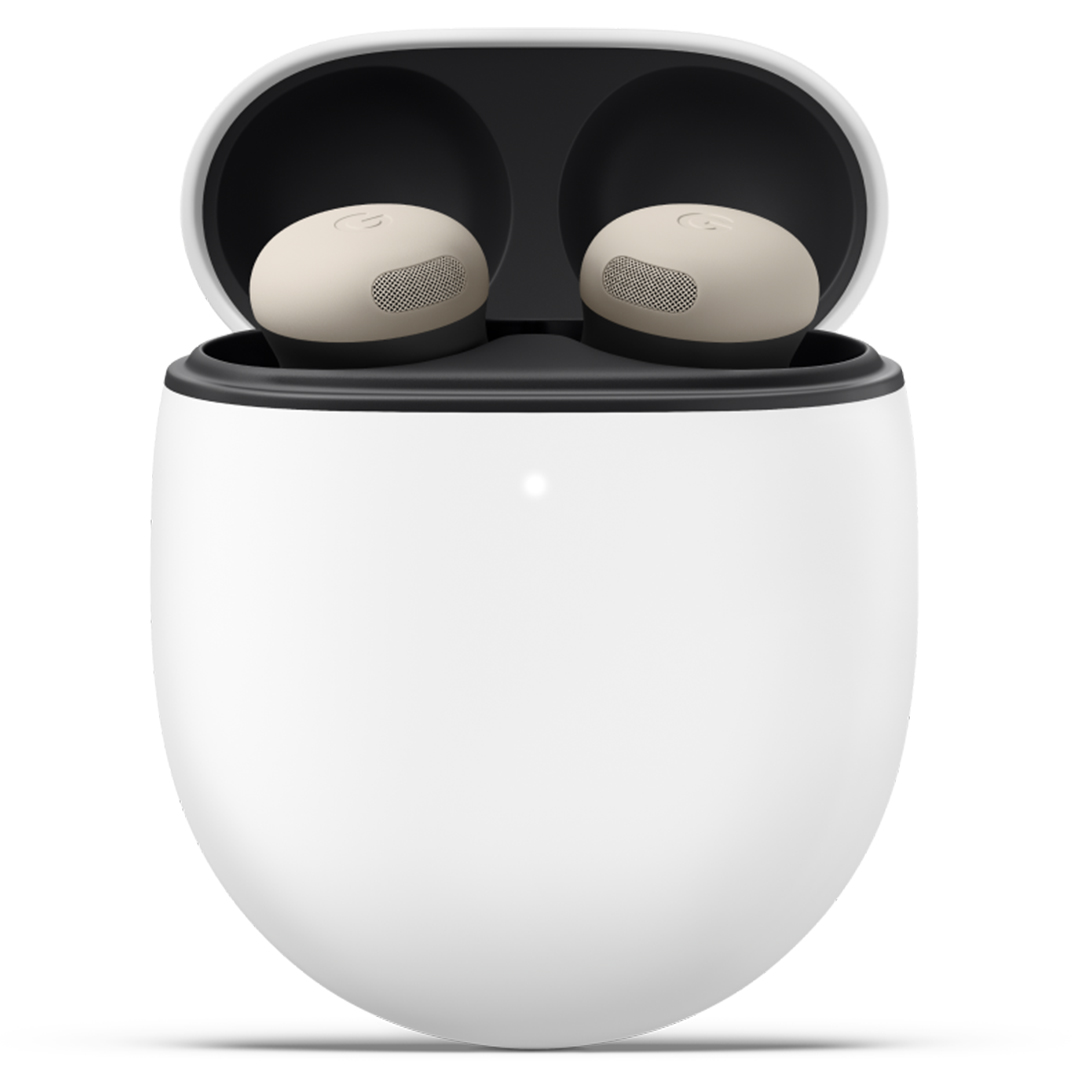
Small buds, big features and sound!
There's a lot to like about the Google Pixel Buds Pro 2. They sound great-the bass response is delightful, the ANC is solid, call quality is great, and Gemini is like something out of a comic book.

Be an expert in 5 minutes
Get the latest news from Android Central, your trusted companion in the world of Android

Tshaka Armstrong is a nerd. Co-Founder of the non-profit digital literacy organization, Digital Shepherds, he’s also been a broadcast technology reporter, writer and producer. In addition to being an award-winning broadcast storyteller, he’s also covered tech online and in print for everything from paintball gear technology, to parenting gadgets, and film industry tech for Rotten Tomatoes. In addition to writing for Android Central, he’s a video contributor for Android Central and posts everything else to his own YouTube channel and socials. He blathers on about his many curiosities on social media everywhere as @tshakaarmstrong.
